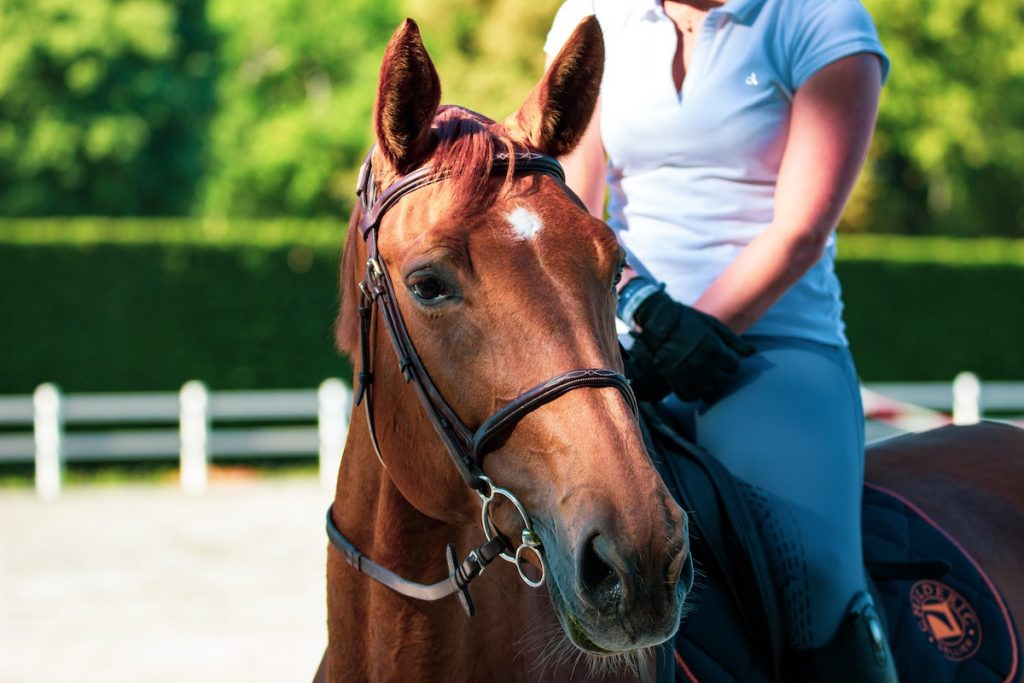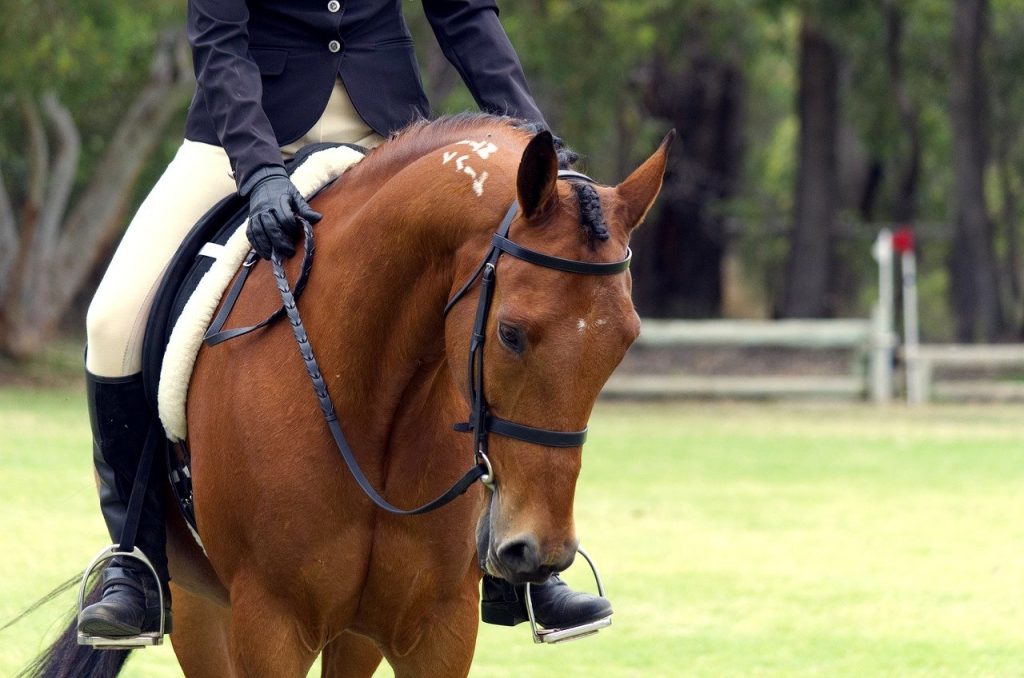Tongue lolling, head tossing, balking when asked to go forward can be signs your horse’s bridle is uncomfortable. Horses can get as cranky about bridle fit as they do about a saddle that pinches. If your horse’s bridle isn’t adjusted correctly, it can lead to painful rubs behind the ears, dental problems, and even permanent injury to his facial nerves. Fortunately, a good fit can be achieved with just a few minor adjustments.
Form and function.
It may be obvious, but the bridle’s most important function is pretty basic; to keep the bit from dropping out of your horse’s mouth. Of course, even the simplest of bridles is much more than just a bit hanger. Your horse’s bridle acts as a means of subtle communication between you and your horse. When your horse is comfortable in his body and face, it’s easy to communicate with him through your seat and reins.
But, if he’s uncomfortable, either in the jaw, face, cranial nerves, or facial nerves he might tune you out. And that discomfort can also affect his balance and equilibrium. Stumbling is often related to a poorly fitting bridle.
The brow band.
The brow band keeps the cheek pieces in place, preventing the bridle from sliding back on your horse’s head. It’s common to see browbands that are too small. If you are not careful this can even make your horse a little spooky. A simple change to a larger browband can help your horse be less visually reactive.
To check fit, you should be able to fit a finger’s width between the leather and your horse’s forehead. If it’s too tight, the crownpiece tends to move forward, putting pressure on the superficial and deep muscles of your horse’s ear and forehead.
Cheek pieces and buckles
Cheek pieces and buckles should fall next to or about an inch away from the eye. Cheek pieces that are too long result in buckles that rub up against the bone above the eye and, worse yet, if the brow band is too small, it will compound the issue.
Buckles should never stack on top of each other. Pay close attention to how your buckles lie on your horse’s face. There’s no need to replace your bridle; a good leather smith can adjust the location of buckles for you.
Throat latch
To fit the throatlatch, use the four finger rule. Keep in mind that the throat latch’s real purpose is to keep the bridle from falling forward off your horse’s head. “You should be able to fit your fist between the horse’s jaw and the throat latch. If it’s too loose, the bridle can be pulled off, but a too tight throatlatch could interfere with your horse’s airway.
Cavesson/nose band
A too tight noseband or cavesson creates a lot of tension in the horse as a whole. The golden rule is to leave at least one finger’s width between the noseband and your horse, which allows freedom of the jaw. If your horse evades the bit by opening his mouth, first look towards a training or medical issue to resolve the problem.
Bit adjustment
Adjust buckles on cheek pieces evenly so that the bit rests level in your horse’s mouth. Ideally, the bit should fill no more than ½ of the space between his upper hard palate and the bars. This will depend on your horse’s anatomy, of course, but use this as a general guide.
Keep the no wrinkle rule in mind, but adjust for your horse’s individual comfort.
Achieving a comfortable bridle fit is easy once you know how. You may find your horse will be more willing when he’s happy in his bridle.
Love this blog? We think you will like War Bridle: Simplicity in its Finest Form





